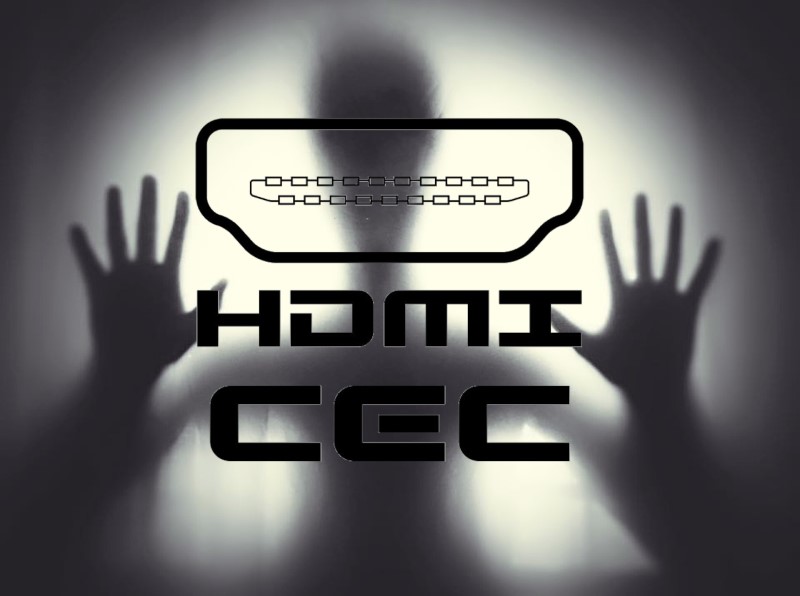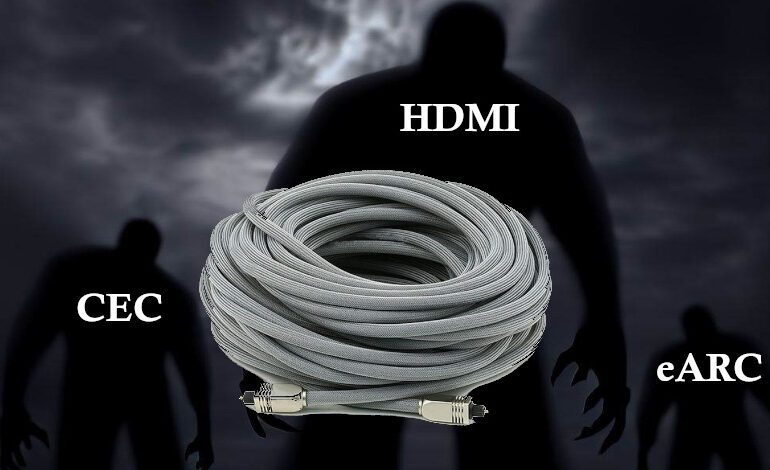Why Can’t an Optical Cable Send Full Lossless Audio?
We recently had a comment on an article about how HDMI works. Or should we say “works?” Because it doesn’t work for many. If you disable CEC and don’t need eARC, it works fine. But how are you going to get your audio from the apps in your TV back to your AV receiver? HDMI eARC is the only way to get lossless audio. But why? Why can’t an optical cable send full lossless audio? The answer is both simple and dumb. And it should make you mad. Let’s discuss.
HDMI Marketing Hype
If you listen to the HDMI people, they’d have you believe that their cable is the only one capable of sending lossless audio. They also claim that their solution is the best for other reasons. Let’s break down a couple.
Single Cable Solution
One of the big “advantages” of HDMI is that it is a single cable solution. At least that’s what they tell you. With a single HDMI connection, you can send video and audio. With ARC and eARC, you can send audio back to your AV receiver from your TV. There was even the (mostly unrealized) promise that you could use the HDMI cable to connect all your devices to the Internet. That feature was never widely adopted and therefore never worked.
Before HDMI, we often had multiple cables for video (component video) and even more for audio. TOSLink (commonly referred to as optical these days) and coaxial digital cable simplified audio down to one cable for audio but we were still stuck with three additional cables for video.
Fiber Optic Cable Bandwidth
HDMI marketing would have you believe that the optical cable is not capable of sending full lossless audio back to your AV receiver. These are the same people that will sell you an optical cable for long HDMI runs. Fiber optic cables bring high-speed Internet to your home. They are used in runs far too long for traditional copper. The cable isn’t the problem.
The problem is HDMI.

HDMI Killed the Potential of Optical
When HDMI hit the scene, it promised HDCP. HDCP or High-bandwidth Digital Copy Protection is designed to stop piracy. If you’ve ever heard anyone talk about the HDMI “handshake,” they are talking about HDCP. HDCP verifies that each end of the HDMI cable is connected to an authorized device. At the same time, it checks the capabilities of each device (often leading to connection issues).
This was far too attractive to content creators.
As we said, the optical cable is not the issue with sending full lossless audio, it is the connection. The TOSLink connection was developed far before we had 1080p much less 4k and lossless audio. The connection used can’t support the higher bandwidth, but it could be updated. It isn’t because HDMI already had a “solution” in place AND offered copy protection.
Wrap Up
We’ve been in this industry for a long time. We’ve heard mumblings behind the scenes. Talk of HDMI quietly pushing manufacturers to adopt their solution while simultaneously working to kill any and all rivals (the most obvious one being optical).
What makes more sense is that there is a big financial incentive for HDMI to try and succeed. If that killed other potentially viable solutions would be an afterthought. From the perspective of manufacturers, HDMI makes sense. They want to give their consumers what they want. What do they want? Ease of use and setup. One cable is definitely easier to set up than two (much less four or more). The fact that HDMI has continually failed in being as easy to use as promised is immaterial at this point. Manufacturers bought the hype and now we are stuck with this janky, buggy, and infuriating solution.
What some consumers want is a second connection type that would allow full lossless audio to be sent without having to deal with HDMI CEC and eARC. Optical could do that with a new connection type. But HDMI wouldn’t allow that. They’d surely try and “punish” anyone that tried to release a competing cable (even if that competition was only on the audio side). Given the choice between a single HDMI connection and running one extra optical cable so that we could send full lossless audio that actually works, I think we’d all choose the latter.



TOSLink (S/PDIF) was designed to work with inexpensive plastic fibre cables, and low cost transceivers which is why the bandwidth is limited to 384 Kbit/s with a maximum cable length 10 metres. I would guess that glass fibre and the necessary transceivers were probably prohibitively expensive in 1983 when the TOSLink standard was introduced. Shame there’s never been an official v2 of TOSLink with increased bandwidth and audio capabilities. Some manufactures do support higher bit rates, and additional audio format, but you may have interoperability issues as there’s no official standard. As Tom says, HDMI has a grip on the market now, and TOSLink has a niche audience.